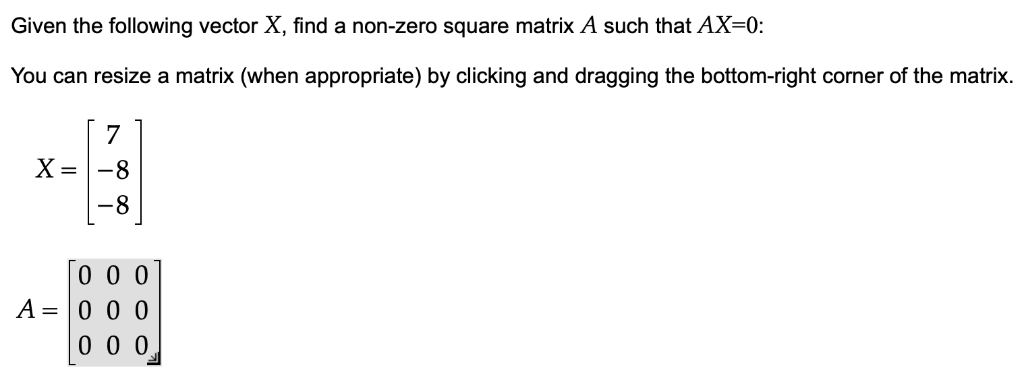


Similarly, a null vector can also be formed, when a zero scalar is multiplied with a non-zero vector, then from scalar multiplication, we can say that the resultant vector formed will be a null vector, with magnitude zero, and no direction.Īn example would be work done by women standing at the same place, by holding a basket over her head. This null vector will have zero magnitude and no direction.Ī real life example would be, two people pushing the cars in opposite directions with the same or equal force, or two people pulling a rope from opposite sides with the same or equal forces. Then, clearly, we can say that when two vectors of same magnitude and opposite direction act on the same body, then the resultant of the two vectors will be a null vector. We also know that the direction of this resultant vector, formed due to vector addition is given by the phase diagram. We also know that two vectors can be added by vector addition. We know that mathematical operations like addition, subtraction, multiplication and division can be carried out on vectors. The null vector can be formed due to various cases as discussed below. Then, such a vector is called a null vector. Thus clearly vectors can also have a value like zero.
#Null vector example plus#
Therefore, we’ve shown for any vector 𝐮 and zero vector of equal dimension, 𝐳 plus 𝐮 will be equal to 𝐮 and 𝐮 plus 𝐳 will also be equal to 𝐮.Hint: We know that a vector is a physical quantity which has both magnitude and direction. And we know that adding zero doesn’t change a value, so this just gives us the vector 𝐮 one, 𝐮 two, all the way up to 𝐮 𝑛, which was our vector 𝐮. We just add the corresponding components of these two vectors together.īut all of the components of 𝐳 are zero, so we just get the vector zero plus 𝐮 one, zero plus 𝐮 two, all the way up to zero plus 𝐮 𝑛.
#Null vector example how to#
So for example, if 𝐳 was the 𝑛-dimensional zero vector - so that’s just a vector of 𝑛 components, all of which are equal to zero - and 𝐮 is also a vector of 𝑛 dimensions - we’ll call the components 𝐮 one and 𝐮 two all the way up to 𝐮 𝑛 - then we know how to add these two vectors together. We could have proven this directly from component addition of two vectors. We would still get the vector 𝐮.Īnd there is one more way we could have proven this. We know that vector addition is commutative, so we could actually add these in the opposite order. Therefore, we’ve shown the zero vector plus the vector 𝐮 will just be equal to the vector 𝐮.Īnd we can also point out something else here. Since graphically, the zero vector doesn’t represent movement at all, moving along the zero vector and then moving along the vector 𝐮 will always just be equal to the vector 𝐮. So it doesn’t really matter how we draw our vector 𝐮. So our zero vector doesn’t represent movement in any direction. But we know all components in the zero vector are equal to zero. First, we’ll want to draw our zero vector.

We can use this to find an expression for the zero vector plus the vector 𝐮. And although in this case our sketch is in two dimensions, this is also true in any number of dimensions. Then the vector 𝐯 plus 𝐮 will be the vector starting at the initial point of vector 𝐯 and ending at the terminal point of vector 𝐮. First, we sketch the vector 𝐯 and then at the terminal point of vector 𝐯, we sketch the vector 𝐮. Recall, we can add two vectors 𝐯 and 𝐮 graphically. However, it’s actually easier to do this graphically. And it might be tempting to try and do this by adding the components together. We need to find an expression for the zero vector plus the vector 𝐮 for any vector 𝐮. So for example, the vector zero, zero will be the zero vector in two dimensions. The zero vector is the vector which has all of its components equal to zero. Let’s start by recalling exactly what we mean by the zero vector. And there’s a few different ways we can do this. And we need to find an expression for the vector 𝐳 plus the vector 𝐮 for any vector 𝐮. In this question, we’re told that 𝐳 is the zero vector. What is the vector 𝐳 plus the vector 𝐮 equal to for any vector 𝐮?


 0 kommentar(er)
0 kommentar(er)
